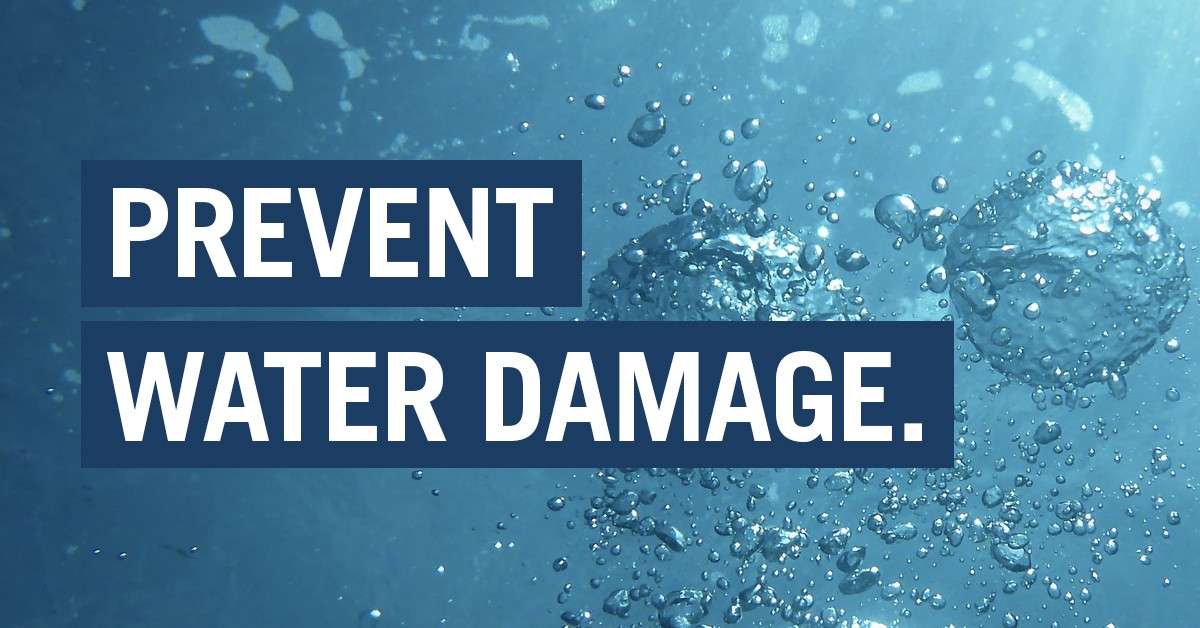
Protecting Your Home From Water Damage
As our climate changes, water damage is becoming more of a problem. Repairs can be costly, but there are many things you can do around the home to prevent damage from occurring. Here are some tips to help you keep everything dry.
Your Plumbing System
Plumbing is one of the most important things in your home to check regularly.
- Inspect pipes, drains, taps and fixtures like toilets, showers, baths and sinks.
- Keep a lookout for leaks from water heaters, dishwashers, washing machines, humidifiers, sump pumps and other appliances.
- Install a water detection and automatic shut-off system to prevent water damage inside your building.
- Take appropriate steps ahead of the cold weather to prevent pipes from freezing.
- Mark water supply pipes clearly so they are easy to find in an emergency.
- Check that water is draining properly from the basement and from outside the building.
- Make sure that drainage hoses from appliances such as the washer, dishwasher and refrigerator are made of flexible metal and have been connected by a certified professional.
- Install a sump pump with a backup power supply.
The Water heater
A water heater that is more than 10 years old is prone to leaks. The damage can be considerable with these types of leaks because of the water pressure inside the tank.
The problem with hot water tanks is that there is often no sign of deterioration until it’s too late. That’s why it’s a good idea to replace your water heater as it nears the end of its lifespan. You should have it replaced by a certified plumber within two years of that date, if not sooner.
In the meantime, you can reduce the risk of a leak by taking the following precautions:
- Check whether there are floor drains near the water heater.
- Install drip pans that are connected to a drain if the water heater is installed on any level above the basement.
- Make sure that the first 18 inches of the hot water line, or longer, are composed of copper pipe.
Windows and other openings
Any opening to the outside needs to be checked frequently. Inspect the edges of attic windows and skylights, from inside and outside, to see whether there is any chance of leakage. If you notice dampness or mould, water seepage is a likely cause.
Outside drainage
Large accumulations of water outside the building can quickly cause serious repercussions. Don’t take chances!
- Keep storm sewer grates clear of leaves and debris.
- Disconnect downspouts that drain directly into the sewer system and redirect them so that they are least two metres away from the building foundation.
- Check downspouts to ensure water is draining properly from the roof.
- Make sure the building lot is graded so that water drains easily away from the building walls and foundation.
What is a water detection system?
A water detection — or leak detection — system can prevent water damage caused by leaking plumbing fixtures or pipes. Sensors are installed in strategic areas of the home, such as water lines, sprinklers and major appliances. When the sensor detects water, it sends a signal to an alarm panel and a monitoring station immediately alerts you to the problem. Some systems come with an automatic water shut-off valve that shuts off the water supply.
Peace of mind knowing your home is protected:
Having home insurance can help cover the costs associated with water damage repairs.
Make sure you’re covered: Review your home insurance policy with a specialist at Access Insurance Group. They can advise you on whether your current coverage is sufficient for water damage.
Get a quote: Looking for home insurance in Edmonton or Red Deer home insurance? We can help! Get a free quote from Access Insurance Group anywhere in Alberta.